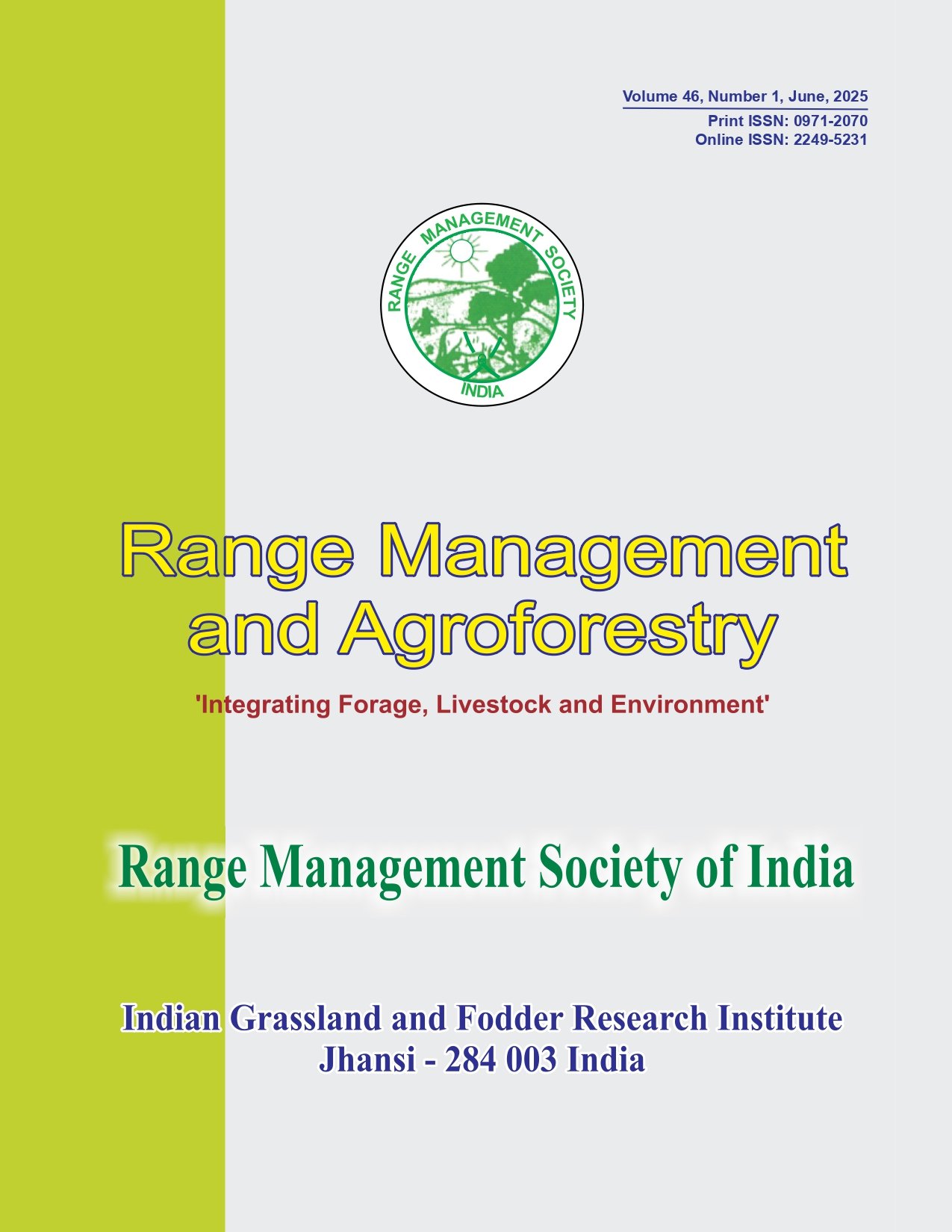Diversity and matrix scoring of fodder plants in Ladakh Himalaya, India: implications for exploration, conservation and evaluation
Keywords:
Conservation, Diversity, Exploration, Fodder plants, Ladakh, Matrix rankingAbstract
The present study was conducted in Leh and Khaltsey blocks of Leh, Ladakh region of western Himalaya to study the diversity of fodder plants and to rank them according to their use and importance during May, 2015 to October, 2016. The study indicated that local people possess immense traditional knowledge about useful fodder plant species and their ethno-botanical use. The study describes 62 plant species belonging to 15 families, used as a source of fodder by farmers of Leh, Ladakh. Out of 62 plant species, 25 species (whole plant parts); 8 species (leaves); 6 species (leaves and twigs); 2 species (fruits and leaves); 4 species (pods and leaves) were used as fodder. Fourteen species (grasses and sedges) belonged to Poaceae and Cyperaceae, nine species (herbs) to Leguminoceae, eleven species to fodder trees and 28 species to other shrubs and forbs. A sizeable number of species belonged to the family, Poaceae followed by Leguminoseae and Salicaceae. Forage legumes were most preferred by the agro-pastorals followed by fodder trees and grasses. The average matrix ranking was highest (4.56) in legumes followed by fodder trees (4.54) and grasses (3.74). The range of matrix ranking varied from 2.4 to 4.6 in case of other forage plants belonging to several families (shrubs and other forbs). Medicago sativa and M. falcata were the main cultivated fodder species in Ladakh, followed by Avena sativa (oats). Crop residues of millets and pseudo-cereals like, Setaria italica, Fagopyrum spp., Panicum miliaceum and Amaranthus caudatus were also used as fodder. It was observed that Ladakh region has a tremendous diversity of fodder plant species. However, there is an urgent need for comprehensive and focused exploration and collection of forage germplasm from this Trans-Himalayan region followed by evaluation, characterization and conservation to harness the vast genetic potential of these crops.




